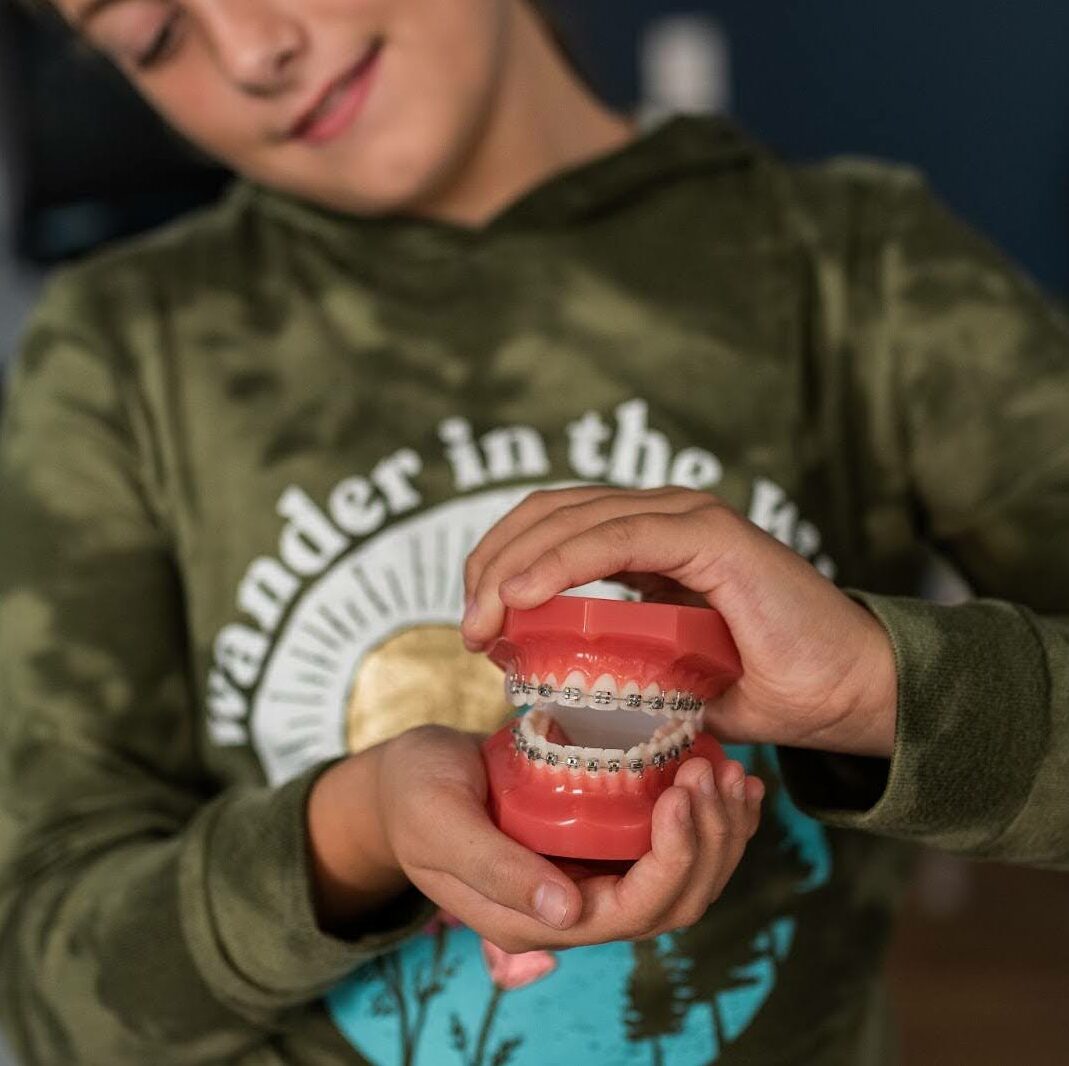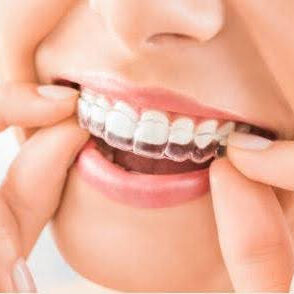
Comprehensive Orthodontics
Once the adult teeth have come in, they still may need to be straightened and the bite corrected. Brackets are placed on the teeth and then a wire is tied in with bands. Patients may choose to use colorful ties in order to make it fun and personalized
Interceptive Orthodontics
Dr. Carter is always evaluating your child’s oral development. Interceptive Orthodontics is done at an early age to prevent a developing issue from progressing. She creates skeletal harmony between to top and bottom jaws and intercepts developing problems, such as impacted teeth or excessive crowding. She works with a child’s growth to mold the mouth into a better fit for adult teeth. Sometimes the front teeth are too far forward, behind lower teeth, or the top jaw is too narrow to fit properly and bite correctly with the lower jaw. This ensures that the patient’s mouth is in the optimal position so as the adult teeth grow in everything is developing properly.


Metal vs Ceramic Brackets
Patients can choose between metal and ceramic brackets. Both are equally effective and it is an esthetic choice. The materials are different and it’s like comparing the strength silverware and porcelain plates. The metal is sturdier and a better option for patients that are highly active and involved in sports. The ceramic are clear and less visible. In terms of treatment they work the same way. Colors may be placed on either.
Wild Smiles
Who says braces can’t be fun? Wild Smiles is a great way for you to personalize your smile. You can choose from soccer balls, footballs, diamonds, flowers, hearts, and stars. These metal brackets are no different from the traditional square brackets and allow you to add more personality to your smile.


Invisalign
Some patients may prefer not to have any brackets and may choose to go with Invisalign treatment. Beautiful smiles are created through a series of clear aligners. Compliance is essential and patients are to wear them 22 hours a day, removing only to eat and brush teeth. Dr. Carter will instruct the patient as to when they can move to the next tray. Treatment time varies for each patient, but tends to be a shorter time than traditional braces.
Retainers
Once patient’s teeth are in the optimal position, we want them to stay in the same position. Every time we bite, chew, speak and swallow there are micromovements in the teeth. Wearing your retainers daily puts the teeth in the original position and helps maintain your beautiful healthy smile.


Airway Ortho
Airway orthodontics is a specialized approach within orthodontics that focuses on the alignment of the teeth and jaws to improve airflow and support healthy breathing patterns. The treatment considers how the structure and function of the oral and facial areas impact the airway, particularly when it comes to breathing during sleep throughout the day. This is always included in our orthodontics as we look at the entire structure and not just teeth.
1. Optimizing Airway Space: Airway orthodontics aims to create adequate space in the oral and nasal passages. For some individuals, improper jaw development or tooth alignment may lead to restricted airways, which can contribute to conditions like snoring, Sleep apnea, or mouth breathing. The floor of the sinus is the roof of the mouth and are interrelated.
2. Breathing and Posture: A primary focus is on improving how a person breathes, especially during sleep. Issues like obstructed breathing can lead to sleep-disordered breathing conditions, including snoring and obstructive sleep apnea (OSA). Proper orthodontic treatment can improve airflow, reduce the need for mouth breathing, and promote nasal breathing, which is healthier.
3. Mouth Breathing vs. Nasal Breathing: Encouraging nasal breathing is key in airway orthodontics. Mouth breathing can lead to dry mouth, bad breath, and an increased risk of dental issues. It can also affect the development of facial structures. Airway orthodontics works to encourage nasal breathing by adjusting the alignment of the jaws and teeth.
4. Sleep Quality: Proper airway management can alleviate conditions like sleep apnea. In some cases, orthodontic appliances like expanders or mandibular advancement devices (MADs) can be used to help adjust the position of the jaws, leading to better airflow and improved sleep quality.
5. Facial and Skeletal Development: Airway orthodontics can be especially beneficial for children whose facial and jaw structures are still developing. Early intervention can guide proper growth to prevent future breathing issues. For adults, treatments may help correct existing airway problems and reduce symptoms related to jaw misalignment.

